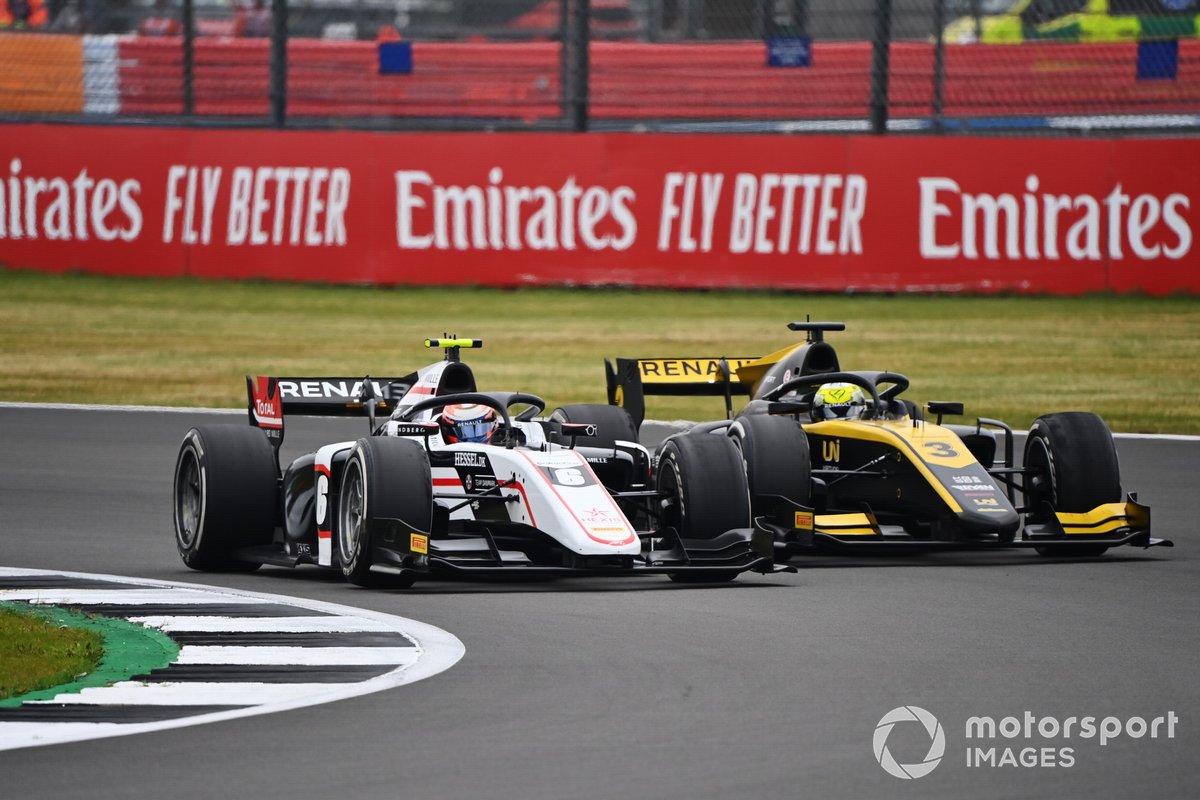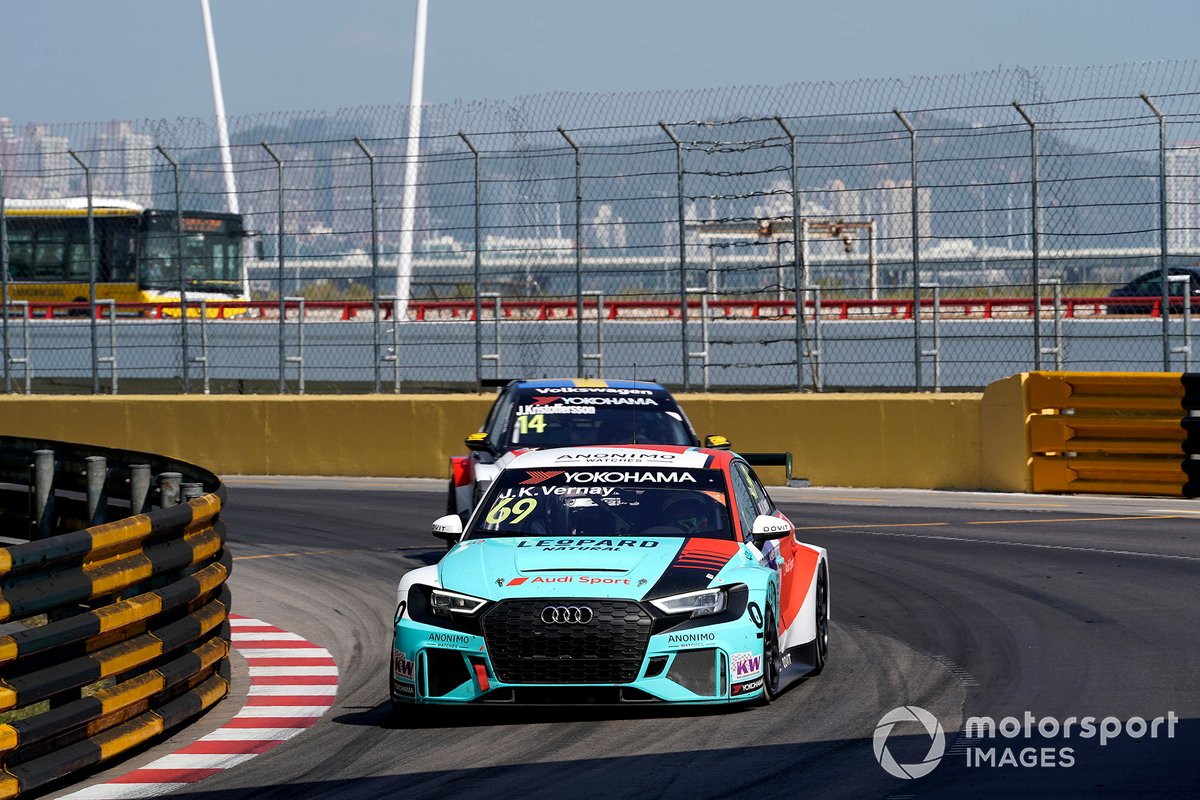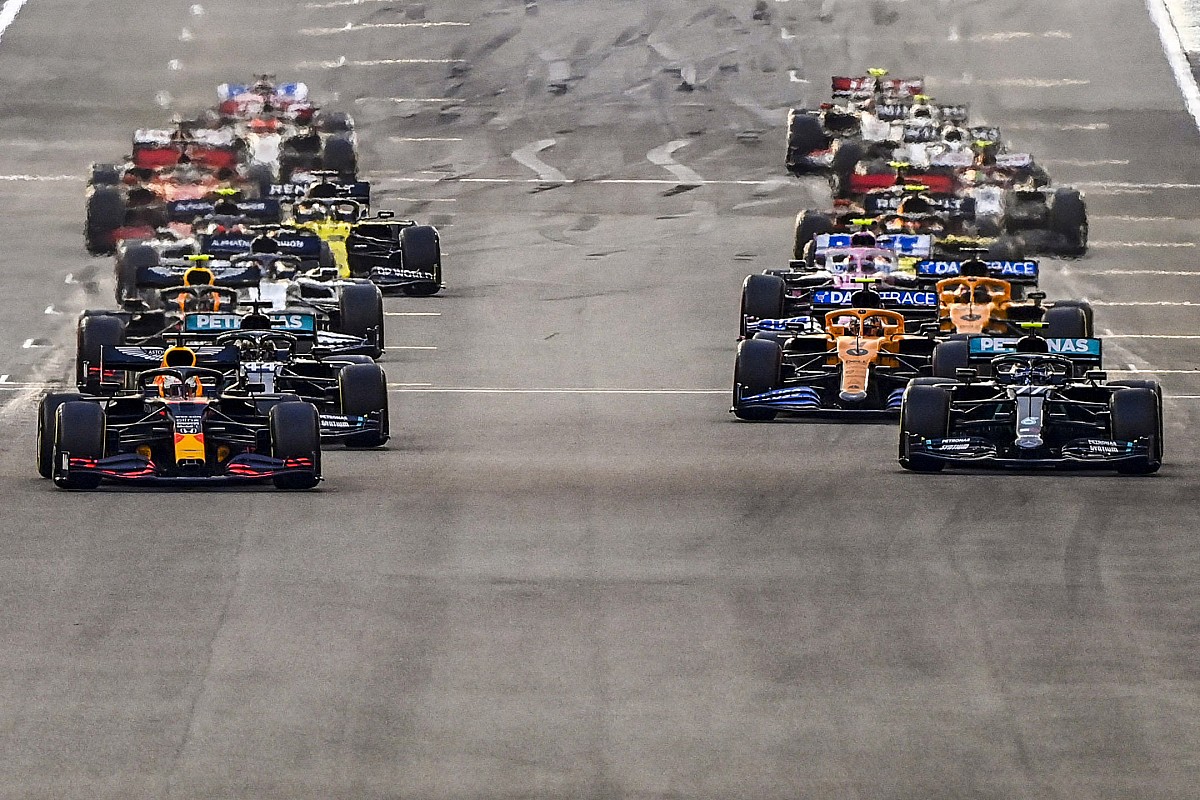For drivers and fans across the world, it’s the speed in particular that provides the biggest attraction. And the same is true in virtually every series of motorsport.
The rivalries, the talent, the triumph and the heartbreak also keep fans coming back for more, but the sheer adrenaline of seeing cars drive as fast as possible is perhaps the most intoxicating element of all.
Different series have very different top speeds depending on their power, aerodynamics and technology. Even the commitment from individual drivers – figuring out how to brake as late as possible – plays a part too.
Then you have to factor in the nature of the tracks themselves: Le Mans is a very different prospect to the Monaco Grand Prix, just as the Indy 500 is a world apart from the Monte Carlo Rally.
So how do the various series compare with each other?
Formula 1

Valtteri Bottas, Mercedes AMG F1, starts the race in pole position
Photo by: Steve Etherington / Motorsport Images
Top race speed: 360km/h / 223mph
Fastest ever speed: 397.36km/h (246.9mph)
Acceleration: 0-60mph – approximately 2.6s
F1 cars accelerate from 0 – 60mph in roughly 2.6 seconds. This might seem slow given their top speed, however as a lot of their speed comes from the aerodynamics (which works better the quicker the car is going), they can’t unleash full power from a standing start.
Valtteri Bottas currently holds the record for the highest speed in an F1 race, hitting 372.5km/h (231.4mph) in the 2016 Mexican Grand Prix. While this is certainly fast, F1 cars aren’t quite the fastest single-seaters – that accolade goes to IndyCar. While F1 isn’t as quick in a straight line, the series’ focus on downforce and cornering speeds means that F1 cars are generally faster over an entire lap.
Both F1 and IndyCar race at the Circuit of the Americas and in its first appearance at the circuit in 2019 the IndyCar pole time was 1m46.018s with an average speed of 186.349km/h. Meanwhile, F1’s pole time set by Valtteri Bottas in 2019 was 1m32.029s, averaging 206.374km/h.
While 372.5km/h (231.4mph) is the fastest speed set during a race, the fastest speed set with an F1 car is much higher. This record is held by Honda, who took their RA106 to the Bonneville Salt Flats in the US, a site famous for top-speed runs, to try and break 400km/h. They were unsuccessful, but set a 397.36km/h (246.9mph) top speed, to claim the highest speed in an F1 car.
IndyCar

Jack Harvey, Meyer Shank Racing Honda
Photo by: IndyCar Series
Top speed: 380km/h / 236mph
Acceleration: 0-100km/h in approximately 3s
IndyCars hit some of the highest top speeds in motorsport, getting up to 380km/h at the end of some straights. While this is more than is ever achieved in F1, IndyCars tend to take a little bit longer to get up to these kinds of speeds.
IndyCar’s top speeds are achieved at the largest oval speedways, where the cars run in their lowest downforce set-up. In 2020 Marco Andretti secured pole position for the Indy 500 with an average speed of 231.351mph (327.32km/h) over the course of four laps, although this is a long way short of the record: Aerie Luyendyk averaged 236.986mph (381.391km/h) in qualifying for the Indy 500 in 1996, with his four-lap time of 2m31.908s still unmatched today.
IndyCars adopt more downforce for street circuits and road courses, and while this makes them faster in these circuits’ tighter corners, their top speed naturally decreases as a result. Will Power won the Honda Indy 200 at Mid Ohio in 2020, with the Australian driver averaging 113.978mph over the 90-minute race; far below what you’d see on an oval.
MotoGP

Johann Zarco, Pramac Racing
Photo by: Gold and Goose / Motorsport Images
Top speed: 362.4km/h / 225.5mph
Acceleration: 0-100 km/h in approximately 2.6s
Johann Zarco holds the record for the top recorded speed for MotoGP in an official session, reaching 362.4km/h at the Losail International Circuit in 2021 during FP4 for the Qatar Grand Prix on a Pramac Ducati. He beat the previous fastest speed of 356.7km/h, set by Andrea Dovizioso at Mugello in FP3 for the Italian GP in 2019. MotoGP is significantly faster than the Moto2 and Moto3 classes that have top speeds exceeding 295km/h and 245km/h respectively.
Like F1, MotoGP machinery can accelerate from 0-100 km/h in around 2.6 seconds but it takes the bikes quite a bit longer to reach 300 km/h – approximately 11.8 seconds from a standstill. Again F1’s cornering speeds hand it a significant advantage, even on tracks with few turns: Valtteri Bottas’s pole time of 1m02.939s in qualifying for the Austrian Grand Prix in 2020 far outstripped the 1m23.450s set by MotoGP’s polesitter Maverick Vinales that same year.
NASCAR

Race winner Ryan Blaney, Team Penske, Ford Mustang BodyArmor
Photo by: John Harrelson / NKP / Motorsport Images
Top speed: just over 321km/h / 199mph
Acceleration: 0-96km/h in 3.4s
Since the 1980s, NASCAR has been actively restricting the top speeds of its cars as a safety measure after a number of incidents that injured spectators and drivers alike. The cars’ weight also works against them in terms of outright top speed. The current top speeds recorded in NASCAR are around 321km/h, quite a bit slower than F1 and IndyCar. NASCAR also has a slower acceleration time, going from 0-96km/h in around 3.4 seconds.
Formula 2

Christian Lundgaard, ART Grand Prix and Guanyu Zhou, UNI-Virtuosi
Photo by: Mark Sutton / Motorsport Images
Top speed: 335km/h / 208mph
Acceleration: 0-100km/h in 2.9s
F2 cars tended to lap at around 10 to 15 seconds slower than F1 cars. Taking the 2020 Spanish Grand Prix as an example, Lewis Hamilton secured pole with a time of 1m15.584s while Callum Ilott set a benchmark of 1m28.381s in F2.
Comparing the two disciplines on the same track (and in this case, on the same weekend) gives a clear idea of the gap between the two. F2 machines are designed to be less complex than F1 cars, giving drivers a step on the way to the world’s premier single-seater series.
Powered by a 3.4-litre V6 Mecachrome engine, F2 cars top out at around 335km/h in the low-drag set-up used at Monza with the DRS engaged. 0-100km/h takes around 2.9 seconds, while 0-200km/h is achieved in 6.6 seconds.
Formula 3

Dennis Hauger, Hitech Grand Prix leads Alexander Peroni, Campos Racing
Photo by: Mark Sutton / Motorsport Images
Top speed: 300km/h / 186mph
Acceleration: 0-100km/h in 3.1s
The rung on the ladder below Formula 2 is Formula 3. F3 cars are step slower again, but they’re still able to achieve top speeds in the region of 300km/h. Acceleration is a little gentler (relatively speaking) too, with 0-100km/h taking an estimated 3.1 seconds and 0-200km/h covered in 7.8 seconds. That’s still faster than you’d get from a typical road-going supercar, which puts the performance into perspective.
F3 cars are powered by a 3.4-litre, six-cylinder Mecachrome engine that develops around 380hp. The design of the cars has cost effectiveness and competitiveness as its focus in order to create close racing rather than pursue outright speed.
Formula E

Mitch Evans, Panasonic Jaguar Racing, Jaguar I-Type 5, leads Alex Lynn, Mahindra Racing, M7Electro, and Nyck de Vries, Mercedes Benz EQ, EQ Silver Arrow 02
Photo by: Andrew Ferraro / Motorsport Images
Top speed: 280km/h / 174mph
Acceleration: 0-100km/h in 2.8s
The current Gen2 car being raced in Formula E has a top speed of 280km/h, slower than most top-tier single-seater series. However, as a car designed to race on tight street circuits where it would not be possible to reach the dizzying speeds of F1 or IndyCar, it is not really possible to compare its performance to that of an F1 car. The core concept of Formula E is to bring sustainable electric racing into cities, which while not affecting the excitement of the competition, gives the series a different priority to pure speed. Formula E cars do enjoy acceleration speeds comparable to F1 and MotoGP, managing 0-100km/h in 2.8 seconds.
DTM

Ferdinand Habsburg, Audi Sport Team WRT, Audi RS 5 DTM
Photo by: Alexander Trienitz
Top speed: 300km/h / 186mph approx.
Acceleration: 0-100km/h in 3s approx
Deutsche Tourenwagen Masters – or DTM as it’s known – is a touring car series based in Germany, but with a calendar that visits a number of different European tracks over the course of a season. Like many series the 2020 schedule was curtailed thanks to the COVID-19 pandemic, although it still managed to hold nine race weekends (with two races each), including a season-opener at Spa in Belgium.
Robin Frijns set pole position in the first qualifying session of the year for Audi, setting a time of 2m05.625s; some considerable distance behind Lewis Hamilton’s 1m41.252s in F1 in 2020.
Despite this disparity, 2020’s DTM cars were the fastest ever on paper, breaking 300km/h in the speed traps. This follows the introduction of the ‘Class One rules’ shared with Japan’s Super GT series. The previous regulations saw V8-powered DTM cars pushing 270km/h, but a switch to four-cylinder turbo engines has delivered a significant jump in performance.
WTCR

Jean-Karl Vernay, Leopard Racing Team Audi Sport Audi RS 3 LMS
Photo by: Alexander Trienitz
Top speed: 260km/h / 161mph approx.
Acceleration: 0-100km/h in 4.5s
The World Touring Car Cup (known as the World Touring Car Championship until 2018) consists of cars that follow TCR regulations. These must be based on four- and five-door production vehicles that are sold in numbers greater than 5,000 per year, with power coming from 2.0-litre turbocharged engines. As is the case in many series, WTCR employs Balance of Performance measures to ensure that racing is close throughout the field.
Power is capped at 360bhp (365hp), and speeds typically reach 260km/h. In 2020, Esteban Guerrieri took pole at the Hungaroring with a time of 2m05.705s at an average speed of 125.5km/h, although this took place in the wet. When F1 last undertook a wet qualifying session at the same track Lewis Hamilton was on pole for Mercedes after a 1m35.658s lap, which lends a little perspective if not the full picture.
WRC

Sébastien Ogier, Julien Ingrassia, Toyota Gazoo Racing WRT Toyota Yaris WRC
Photo by: McKlein / Motorsport Images
Top speed: 200km/h / 124mph approx.
Acceleration: surface dependent
In 2017, a stage of WRC Rally Sweden was cancelled over fears that the latest generation of cars – which had more power, better aerodynamics and centre differentials – were driving too quickly to be considered safe. Ott Tanak completed special stage 9 at an average speed of 85.65mph (137.84km/h), and FIA rally director Jarmo Mahonen said at the time that anything over 80.78mph (130km/h) was “too fast”.
These kinds of speeds are nothing compared to what you see in other forms of motorsport, although pitting track driving against rallying in this sense really is like comparing apples and oranges. Rally drivers have far less grip to work with, and driving the same circuit lap after lap is a very different challenge to having every corner described to you at speed by a co-driver with only a few moments’ notice.
Kris Meeke holds the record for the highest average speed over a World Rally Championship event, averaging 126.62km/h in his Citroen DS3 WRC at Rally Finland in 2016.
V8 Supercars

Race winner Shane van Gisbergen, Triple Eight Race Engineering Holden
Photo by: Edge Photographics
Top speed: 300km/h / 186mph approx.
The Supercars Championship is a touring car category that’s based in Australia, with an annual round in New Zealand and occasional events previously held in China, the USA and the UAE. The regulations state that cars must be based on front-engined, rear-wheel drive production vehicles that have four seats and are sold in Australia, and in 2020 the field consisted solely of Ford Mustang GTs and Holden Commodores.
The Bathurst 1000 – a 1,000km race – is the pinnacle of the Supercars Championship calendar, with the track record set by Scott McLaughlin in 2019 with a 2m03.378s lap equating to an average speed of 181.29km/h (112.65mph) around the 6.213km circuit. Down the Conrod straight, cars typically hit tops speeds of around 300km/h.
WEC

#36 Alpine A480 LMP1: André Negrão, Nicolas Lapierre, Matthieu Vaxiviere
Photo by: Alpine
Top speed: 345km/h / 214mph approx. (LMP1)
Beginning in 2021, the World Endurance Championship will be split into four categories: Hypercars, LMP2, LMGTE Pro and LMGTE Am. This represents a big shift away from the outgoing structure, which has seen LMP1 cars (and more specifically, the hybrid entrants in that class) pushing the boundaries of speed in recent years.
Kamui Kobayashi set the lap record in qualifying for the 24 Hours of Le Mans in 2017 when he clocked a 3m14.791s lap around the 13.626km Circuit de La Sarthe, which amounted to an average speed of 251.9km/h for his Toyota TS030 HYBRID.
By 2020 that hadn’t been bettered, although Rebellion Racing’s Bruno Senna clocked a staggering 347.8km/h in the speed traps at one stage. In LMP2, Nicholas Foster hit 338.1km/h for Eurasia Motorsport, Alexander Lynn struck 305.6km/h for Aston Martin in the GTE Pro class, and Giancarlo Fisichella recorded 303.9km/h for AF Corse in GTE Am. So while they don’t accelerate as quickly as F1 cars, their top speeds aren’t a million miles away.
It’s important to note that all of these figures come with the caveat that WEC cars’ performance in every class is heavily regulated to make sure that racing is close. After Porsche pulled out of the WEC at the end of 2017, it developed a no-holds-barred version of its prototype racer, dubbed the 919 Hybrid Evo. The modified car destroyed several lap records, including a 1m41.77s at Spa that stood until being pipped by Lewis Hamilton in qualifying for the Belgian Grand Prix in 2020. It also smashed Stefan Bellof’s 35-year-old lap record at the Nurburgring in 2018, completing a lap of the Nordschleife in 5m19.546s at an average speed of 234.67km/h (145.82mph) and taking almost a minute off the previous best.
Super Trofeo

Track action
Photo by: Lamborghini Super Trofeo
Top speed: 325km/h / 201mph
Acceleration: 0-100km/h in 3.2s
Super Trofeo is a single-make series in which competitors race against each other in identical Lamborghini Huracans. There are separate editions of the series in Europe, Asia and North America, with the season culminating in a World Final that’s held at a different circuit every year.
The Lamborghini Huracan Super Trofeo – which is based on the production version of the road-going supercar – is said to generate 620hp from its 5.2-litre V10 engine. 0-62mph takes 3.2 seconds and 0-124mph is completed in 9.9 seconds en route to a top speed of 202mph.
Isle of Man TT

Peter Hickman
Photo by: Isle of Man TT
Top speed: 322km/h / 200mph approx.
The Isle of Man TT has a reputation as one of the most dangerous races in the world, with riders regularly chasing 200mph in sections of the Snaefell Mountain Course. In 2015 Kawasaki rider James Hillier briefly clocked 206mph (331.5km/h) on his Ninja HR2, doing so on the Sulby straight – a section of public road that carries a speed limit of 30-40mph for everyday cars – during a parade lap.
The overall lap record is held by Peter Hickman, who averaged 135.452mph (217.989km/h) around the 37.73-mile course on a BMW S 1000 RR in 2018. Hickman set the benchmark on his final lap of the six-lap TT Senior race.
Top Fuel

Gary Scelzi wins Top Fuel
Photo by: Motorsport Images
Top speed: 530km/h / 329mph approx.
Acceleration: 0-530km/h in 3.7s
The National Hot Rod Association (NHRA) was established in 1951: back then drag racers could hit speeds of 140mph in around nine seconds, the kind of acceleration some modern, road-legal supercars can achieve comfortably.
Today though, the NHRA’s Drag Racing Series boasts the fastest-accelerating cars in the world. The highest category is Top Fuel, where the cars are powered by a supercharged, fuel-injected engine based on Chrysler’s Hemi design. Consuming 15 gallons of nitromethane fuel in a matter of seconds, Top Fuel dragsters are capable of hitting speeds in excess of 330mph (531km/h) and covering a 1,000ft drag strip in under 3.7 seconds from a standing start.
In 2019, Brittany Force set the record for the fastest run in NHRA history, with a time of 3.569 seconds and a top speed of 338.17mph (544.23km/h) at the finish line in her Advance Auto Parts Top Fuel machine.
The next class down from Top Fuel is Funny Car, and while they use the same source of power, their wheelbases are shorter and they tend to bear a closer resemblance to production vehicles. Funny Cars can also breach speeds of 330mph, and can finish runs in as little as 3.8 seconds.
shares
comments
